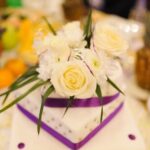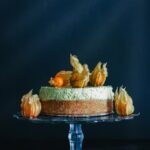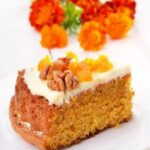Are you a beginner looking to learn how to decorate a cake with fondant icing? Fondant is a versatile and popular choice for decorating cakes, giving them a smooth and professional look. In this article, we will guide you through the process of using fondant to decorate a cake, from understanding the basics to troubleshooting common issues and achieving professional-looking results.
To get started with decorating your cake using fondant icing, it’s important to have a good grasp of the basics. From necessary tools and ingredients to preparing the cake and applying a crumb coat, we will cover everything you need to know as a beginner.
Once you have mastered the basics of fondant icing, we will also provide tips and tricks for achieving professional-looking results with fondant. Whether you’re looking to create a simple, elegant design or something more intricate and detailed, this article will help you take your cake decorating skills to the next level. So let’s dive in and learn how to decorate a cake with fondant icing for beginners.
Necessary Tools and Ingredients for Decorating a Cake With Fondant
When it comes to decorating a cake with fondant icing, having the right tools and ingredients is crucial for achieving professional-looking results. For beginners, it can be overwhelming to know where to start, but with the right supplies, the process becomes much more manageable.
First and foremost, you will need fondant icing in the color of your choice. You can either purchase pre-made fondant or make your own using marshmallows and powdered sugar. Other essential ingredients include a crumb coat (a thin layer of frosting applied to the cake before covering it with fondant), such as buttercream or ganache, which will help the fondant adhere to the cake.
In terms of tools, a rolling pin is essential for rolling out the fondant to the desired thickness. It’s also beneficial to have a fondant smoother on hand for shaping and smoothing the fondant once it’s draped over the cake.
Additionally, a sharp knife or pizza cutter will come in handy for trimming excess fondant from the base of the cake. Finally, having various molds, cutters, and shaping tools can help add decorative accents and designs to your fondant-covered cake.
Overall, having these necessary tools and ingredients on hand will set you up for success when decorating a cake with fondant icing for the first time. With practice and patience, even beginners can achieve stunning results using fondant.
Preparing the Cake and Applying a Crumb Coat
To successfully decorate a cake with fondant icing, it is essential to start with a well-prepared cake and apply a crumb coat. Before you begin working with fondant, ensure that your cake has been leveled, trimmed, and frosted with a thin layer of buttercream or ganache. This crumb coat will help the fondant adhere to the cake and create a smooth base for decorating.
When preparing the cake, make sure to use a sturdy base such as a cake board or plate that is larger than the size of the cake. This will make it easier to move the finished product without damaging the fondant decoration.
Once your cake is prepped and has a crumb coat applied, it is important to let it set before proceeding with applying the fondant. This will ensure that the surface is firm and will not cause the fondant to sag or tear when draped over the cake. You can refrigerate the cake for about 30 minutes to help the crumb coat firm up before moving on to the next step.
As a beginner learning how to decorate a cake with fondant icing, taking the time to properly prepare your cake and apply a crumb coat will set you up for success in achieving professional-looking results. With these foundational steps in place, you’ll be ready to move on to rolling out and draping the fondant onto your cake.
Rolling Out and Draping the Fondant Onto the Cake
After preparing your cake and applying a crumb coat, it’s time to work with the fondant. To start, make sure you have a clean, smooth surface to roll out your fondant. Dust the surface with powdered sugar to prevent sticking, and knead the fondant until it is pliable. Roll it out to about 1/4 inch thick, using a rolling pin dusted with powdered sugar to prevent sticking.
Once the fondant is rolled out, carefully drape it over the cake. Start by lifting one edge of the fondant and draping it over the top of the cake. Gently smooth the fondant down the sides of the cake, being careful not to create any air bubbles. Work quickly but carefully, as fondant can dry out and become difficult to work with if left exposed for too long.
As you work with the fondant, keep in mind that it is quite forgiving. If you find any tears or rips in the fondant as you drape it over the cake, don’t panic. You can easily patch these areas by gently pressing them back together with your fingers. Once the fondant is draped over the cake, use a fondant smoother to gently press and smooth the surface for a flawless finish.
Here are some key points for beginners to keep in mind when rolling out and draping fondant onto a cake:
- Make sure your work surface is clean and smooth
- Knead your fondant until pliable before rolling it out
- Use powdered sugar to prevent sticking while rolling out fondant
- Work quickly but carefully when draping fondant over the cake
- Smooth any tears or rips in the fondant by gently pressing them back together
Smoothing and Shaping the Fondant for a Flawless Finish
Once you have successfully rolled out and draped the fondant onto your cake, the next step in decorating a cake with fondant icing is to smooth and shape it for a flawless finish. Here are some tips to help you achieve a professional-looking result:
1. Use a fondant smoother: A fondant smoother is a handy tool that helps to eliminate air bubbles and wrinkles on the surface of the fondant. Gently press the smoother against the fondant while moving it in circular motions to create a smooth and even finish.
2. Trim off excess fondant: After smoothing out the top and sides of the cake, use a sharp knife or pizza cutter to trim off any excess fondant around the base of the cake. This will give your cake a clean and polished appearance.
3. Fold and pleat method: If you encounter any excess fondant gathering at the base of your cake, gently lift and tuck it underneath using a folding and pleating technique. This will give your cake a neat and tidy finish.
4. Shape with tools: You can also use various shaping tools to add texture, patterns, or designs to the surface of the fondant. Experiment with different tools such as embossing mats, cutters, or piping tips to create unique decorations on your cake.
By following these steps, you can achieve a flawlessly smooth and shaped fondant finish on your decorated cake. With practice and patience, even beginners can master the art of working with fondant icing for stunning results.
Adding Decorative Accents and Designs to the Fondant-Covered Cake
Once you have successfully draped the fondant onto your cake and achieved a smooth finish, it’s time to get creative and add decorative accents and designs to make your cake stand out. Whether you’re looking to create a simple, elegant design or a more intricate pattern, there are endless possibilities when it comes to decorating a cake with fondant icing.
Using Fondant Cutters and Molds
One of the easiest ways to add decorative elements to your fondant-covered cake is by using fondant cutters and molds. These tools come in a variety of shapes and sizes, allowing you to create anything from flowers and leaves to letters and numbers. Simply roll out your fondant, press the cutter or mold into the fondant, and carefully remove the excess to reveal your design.
Hand-Piped Designs
For those who want to showcase their piping skills, using royal icing or buttercream to pipe intricate designs onto the fondant is a great option. This technique allows for more detailed and personalized decorations, such as delicate lace patterns, intricate borders, or even freehand designs. With practice and patience, you can create stunning hand-piped details that will impress anyone who sees your cake.
Edible Paints and Dusts
If you want to add color and dimension to your fondant-covered cake, consider using edible paints and dusts. Edible paints can be used to create watercolor effects or hand-painted designs directly onto the fondant. Similarly, edible dusts can be brushed onto the surface of the fondant to add shimmer, sparkle, or depth. These tools allow for endless creativity and customization when it comes to decorating with fondant icing.
By incorporating these techniques into your cake decorating process, you can take your fondant-covered cakes from basic to breathtaking. Experiment with different methods and find what works best for you as you continue on your journey of learning how to decorate a cake with fondant icing for beginners.
Troubleshooting Common Issues With Fondant Decorating
Cracking or Tearing
One common issue that beginners may encounter when decorating a cake with fondant is cracking or tearing of the fondant. This can happen if the fondant is rolled too thin or if it dries out too quickly. To prevent this, make sure to knead the fondant well before rolling it out to ensure a smooth texture. Additionally, work quickly but carefully when draping the fondant onto the cake to avoid drying it out.
Air Bubbles
Another issue that often arises when working with fondant is the appearance of air bubbles on the surface of the cake. This can disrupt the smooth and flawless finish that you are aiming for. To avoid air bubbles, gently smooth out the fondant with a fondant smoother or your hands immediately after draping it onto the cake. If air bubbles do appear, use a pin to gently prick them and then smooth out the area.
Sagging or Bulging
Sagging or bulging of the fondant can occur if too much frosting is applied to the cake before covering it with fondant. The excess frosting can cause the weight of the fondant to push down and create these unsightly issues. To prevent this, apply a thin layer of frosting as a crumb coat and make sure it sets properly before adding another layer of frosting and applying the fondant.
By addressing these common issues and following these troubleshooting tips, beginners can enhance their skills in decorating cakes with fondant icing. Understanding how to troubleshoot these problems will ultimately result in professional-looking results for your baked creations.
Tips and Tricks for Beginners to Achieve Professional-Looking Results With Fondant Icing
In conclusion, decorating a cake with fondant icing may seem like a daunting task for beginners, but with the right tools, ingredients, and techniques, it can be a fun and rewarding experience. By understanding the basics of fondant icing and following the necessary steps, even those new to cake decorating can achieve professional-looking results.
One of the most important aspects of successfully decorating a cake with fondant is having the right tools and ingredients. From a good quality fondant to essential decorating tools such as rolling pins, smoothing tools, and shaping cutters, having everything prepared beforehand can make the process much smoother. Additionally, taking the time to properly prepare the cake by applying a crumb coat before draping the fondant will ensure a flawless finish.
Rolling out and draping the fondant onto the cake can be one of the trickiest parts of the process for beginners. However, by following step-by-step instructions and taking your time to smooth and shape the fondant, you can achieve a beautiful result. Finally, adding decorative accents and designs to the fondant-covered cake is where you can truly let your creativity shine.
From simple patterns to intricate designs, there are endless possibilities for creating stunning cakes with fondant icing. With patience and practice, even beginners can master the art of decorating cakes with fondant icing.
Frequently Asked Questions
How Do You Put Fondant on a Cake for Beginners?
Putting fondant on a cake for beginners can seem daunting, but it’s not as complicated as it looks. Start by applying a thin layer of buttercream or ganache to the cake to help the fondant adhere. Then, roll out the fondant to an even thickness and carefully drape it over the cake, smoothing out any air bubbles or wrinkles.
What Do You Put on a Cake Before Fondant Icing?
Before applying fondant icing, it’s essential to have a smooth base on your cake. This usually involves covering the cake with a layer of buttercream or ganache to create an even surface for the fondant. The buttercream or ganache also helps the fondant stick to the cake and prevents air bubbles from forming.
How Do You Put Fondant Decorations on a Cake?
When adding fondant decorations to a cake, there are a few key steps to follow. First, make sure the fondant decorations are made ahead of time and have had time to firm up. To attach them to the cake, use a small amount of water or edible glue applied with a brush.
Gently press the decorations onto the fondant-covered cake, taking care not to distort their shape or design. With patience and precision, you can create stunning embellishments for your cakes using fondant.

Welcome to my blog about home and family. This blog is a place where I will share my thoughts, ideas, and experiences related to these important topics. I am a stay-at-home mom with two young children. I hope you enjoy reading it! and may find some helpful tips and ideas that will make your home and family life even better!





